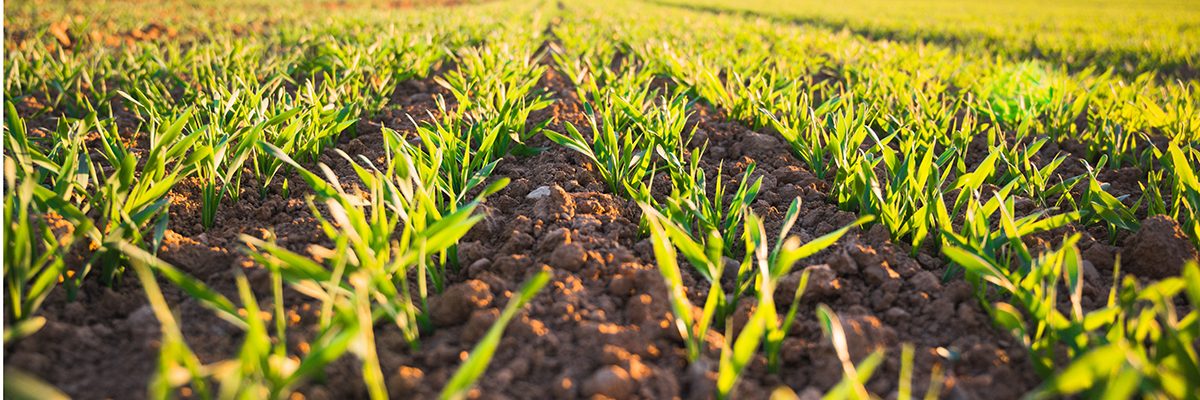In the latest climate related move by the Biden administration, Agriculture Secretary Tom Vilsack announced this week that the government would invest $1 billion to support the transition to climate-smart agriculture. The new Partnerships for Climate-Smart Commodities opportunity will finance pilot projects that create market opportunities for U.S. agricultural and forestry products that use climate-smart practices and include innovative, cost-effective ways to measure and verify greenhouse gas benefits.
In his announcement, Vilsack described this initiative as, “A new pillar in this overall strategy to address climate – meeting (our) president’s goal, responding to market demand, and improving income for producers.”
He explained that the market and consumers are changing in reaction to a changing climate. Consumers are increasingly asking where their food comes from, how it is produced, and are looking for opportunities to make purchases that support the environment. The new program is designed to help American farmers, ranchers and forest landowners respond to this increased demand and to President Biden’s expectation that the U.S. provide, “global leadership in embracing the challenge and the opportunity of climate change… to reduce emissions connected to agriculture in half by 2030 and to net zero by 2050.”
Secretary Vilsack believes an initiative that is voluntary and incentive-based is critical. He insists that farmers, ranchers, and forested land owners play an important role as partners in this climate-smart shift because they historically have been dedicated to good stewardship.
How it will work:
The funding under this program will come in the form of grants, not loans. Funds will be allocated through a competitive process to pilot projects that provide incentives to producers and landowners to:
- implement climate-smart production practices, activities, and systems on working lands,
- measure/quantify, monitor and verify the carbon and greenhouse gas (GHG) benefits associated with those practices, and
- develop markets and promote the resulting climate-smart commodities
For the purposes of this funding opportunity, a climate-smart commodity is defined as an agricultural commodity that is produced using agricultural (farming, ranching or forestry) practices that reduce greenhouse gas emissions or sequester carbon.
Successful projects will aggregate farmers and lead to adoption of agricultural and forestry practices that provide GHG benefits and/or carbon sequestration, including but not limited to cover crops, low-till or no-till, nutrient management, enhanced efficiency fertilizers and more. Applications will be welcomed from a wide variety of public and private entities, including but not limited to non-profits, state governments, Native American tribal governments, small businesses, and higher education institutions. Secretary Vilsack described some examples of what these projects may look like:
- a group of small farmers working with a non-profit to implement and quantify climate-smart practices in partnership with a retailer,
- a network of commodity organizations recruiting specialty crop farmers to quantify reduced emissions and market the resulting products, or
- a farmer-partner organization working with universities to test innovative approaches to monitor and verify climate benefits to aid in marketing.
Equity will also play a critical role in this effort, according to the Secretary. Particular attention will be paid in this process to projects that meaningfully include smaller or historically underserved communities. “We can’t be successful in this if we’re not inclusive,” said Vilsack. He added that the projects should be reflective of the diversity that exists in American agriculture and therefore they will fund a portfolio of projects that include a wide range of operations, crops, and geographies, including early adopters – who have led the way in using practices.
The program will fund projects large and small. Large-scale project proposals for $5 million to $100 million in funding are in the first funding pool and are due April 8, 2022. The second funding pool will include proposals from $250,000 to $4,999,999 and are limited to particularly innovative pilot projects.
Where Does This Fit into Existing Efforts?
The $1 billion in funding for this program will be provided through the USDA’s Commodity Credit Corporation, and Secretary Vilsack emphasized that it would not impact the Corporation’s ability to fund other commitments, including those for the Farm Bill. He also clarified that this is not a carbon market program, but rather a commodity production program designed to complement existing private sector initiatives to promote climate-smart agriculture.
This program is also intended to work together with the Growing Climate Solutions Act – legislation that underscores the need for action in the aid of development of markets of sustainably produced products by small and midsize operations – once passed by the House.
What this Means for Regenerative Ag
This investment – designed to incentivize farmer adoption of new practices and new crops by reducing cost barriers and creating new opportunities to sell higher value crops – offers another lever to address climate change. Yet, it’s still too early to tell what this $1 billion step toward climate-smart agriculture means for the broader movement toward regeneration. Will it serve as a significant market signal for a more regenerative American food system? Will it drive increased investment in supporting infrastructure for climate-smart agriculture, such as new on-farm tools, processing and distribution infrastructure, and brands that utilize climate-smart commodities? Maybe, but one thing’s almost certain, according to Secretary Vilsack: producers involved in these programs will benefit from improved soil health and the myriad of benefits associated with it. That sounds like a step a forward for regeneration.
—
What do you think?
Is this a step toward regenerative food systems? Is your organization looking to take advantage of this funding opportunity? Let us know what you think by emailing us at [email protected].
Stay tuned as we continue to gather feedback on what this means for those working in and investing in the global food system.
To learn more about the Partnerships for Climate-Smart Commodities, including proposal requirements and deadlines, click here.
Sarah Day Levesque is Managing Director at RFSI & Editor of Raising Regenerative News. She can be reached at [email protected].
